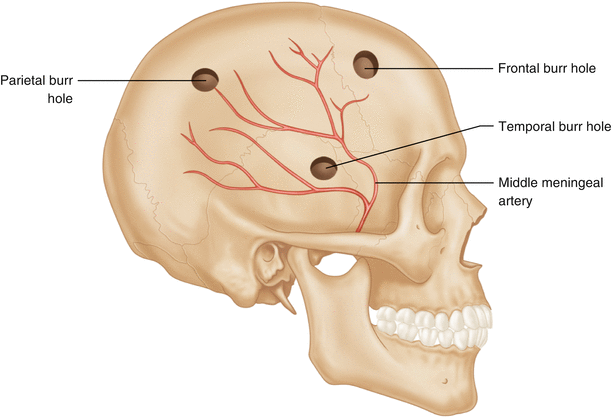Craniotomy – Open-Brain Surgery

This is a medical guide underlying all aspects related to Craniotomy, which primarily focuses on the aftercare after a Craniotomy.
A craniotomy is a critical operation in which the bone of the skull is cut open. The section of the skull which is cut during the procedure is called the bone flap. The length of the procedure depends on the severity of the problem.
What is Craniotomy?
A craniotomy is a surgical procedure operated in the brain, which involves temporary removal of the skull so that the brain can be accessed for any disorder or disease. The bone flap is replaced with tiny plates and is attached to the skull with screws after the procedure. Cases in which the bone flap of the brain is not replaced it is called craniotomy.
Why is Craniotomy Performed?
A craniotomy is performed for treating critical conditions in the brain that require accessing it which might include:
• Brain Cancer
• Brain Tumor
• Hematomas (Blood Clots)
• Skull Fractures
• Aneurysms
• Extraction of Foreign Objects (like Bullets)
• Brain Infection
• Unexplained Swelling in Brain
Who performs a Craniotomy?
A neurosurgeon performs Craniotomy; some neurosurgeons specialize in skull base surgery training. The neurosurgeon might work with a team of oculoplastic, otologic, and reconstruction surgeons.
Before Craniotomy
The patient will go under several tests (e.g. chest X-ray, blood test, electrocardiogram etc.) for a few days before the surgery. The doctor will discuss all the medical history of the patient to become aware of any allergies or previous surgeries.
The patient needs to discontinue consumption of all anti-inflammatory non-steroidal medicines and blood thinners one or two weeks before the surgery.
Note: The patient should not eat or drink anything one night before the surgery.
During Craniotomy
Stage 1 – Prepare the Patient
The patient is prepared for the surgery, by giving him/her general anesthesia. Once asleep, the patient’s head is put on a 3-pin device designed for skull fixation, which holds the patient head is fixating it in a particular position. Now a lumbar drain is inserted into the brain, that helps in getting rid of CSF (Cerebrospinal Fluid), relaxing the brain during the surgery. The patient might also be given mannitol, which is a brain relaxing drug.
Stage 2 – Skin Incision
Now an incision is made on the patient skull, to lift the muscles to expose the bone. Next, a few blur holes are made with the drill on the skull which is used for inserting special saw inside the holes. Now the doctors cut the bone flap, to remove it and access the brain. The bone flap is stored safely which is replaced when the procedure is complete.

Stage 3 – Correct the problem
Once the brain is exposed, the issue is examined and corrected. This might include removal of tumor, blood clots, etc.
Stage 4 – Close the Craniotomy
Once the problem is repaired, the retractors holding the brain are removed, and the flap bone is reattached to the skull using titanium’s screws and plates.
The patient is closely monitored for 48 hours for any unlikely behavior or function in the brain. If everything seems fine, the patient is discharged from the hospital.
Recovery After Craniotomy
Patients should avoid smoking or chewing tobacco, and alcohol consumption for a few months after the surgery as these activities can lead to bleeding problems.
Aftercare
We recommend patients to adopt a healthy lifestyle after the surgery. They can include the following things in their life:
• Regular Exercise
• Healthy nutritious diet
• Mindfulness
Time required for complete recovery
It can take years before the patient skull is recovered completely from the surgery. However, the patient can go back to his/her routine after a few weeks of the surgery.
Risk of Craniotomy
A Craniotomy is prone to the following risk factors:
• Blood Clots
• Brain Damage
• Memory Loss
• Paralysis
• Blood Leakage
• Death
Cost of Craniotomy
The cost of craniotomy in India can range starting from USD 6,500. These charges might increase or decrease depending on the complexities faced during the surgery.
FAQs
How much time is required for recovering from Craniotomy?
Depending on the severity of the surgery, a patient might take 3 months to 1 year to recover completely.
Is Craniotomy painful?
Yes, being a brain surgery, Craniotomy is definitely a painful procedure. It requires cutting open the skull that takes a few months to recover. Patient feels acute headaches and pain on the site of the surgery.
Explore Medmonks.com to learn more about Craniotomy and different brain disorders and treatments.





